Deployments - Norfolk | ||
| | ||
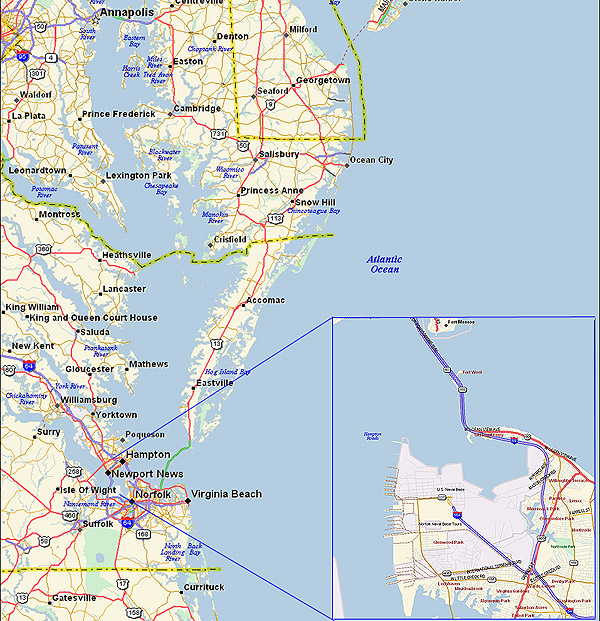 | ||
| Norfolk Naval Base - located inland in a protected harbor on Chesapeake Bay | ||
| Most people think that the genesis of history of modern submarines in the United States centers on Long Island Sound - where Holland was building and testing his boats. However - Norfolk also has a claim on that history - as a boat designed and built by Simon Lake sailed from Norfolk to New York in 1898 - setting the standard for the times in seaworthiness for such craft. In fact - during that trip - a nasty Atlantic storm raged away and sank several ships of more conventional style. Norfolk enjoys a very large protected operating area within the Chesapeake Bay and it's contributaries - an ideal place for working with the new and at times difficult technology. At firat - the early submarines would be towed between Long Island Sound and the Chesapeake Bay - later - as the boats were improved and seaworthiness increased - the boats would travel on their own. A forth rate screw steamer USS Niña- commonly used as a yard tug - was converted to a submarine tender in late 1905. Between 1906 and 1910 Niña operated between Newport, Norfolk and Annapolis tending a growing fleet of submarines. | ||
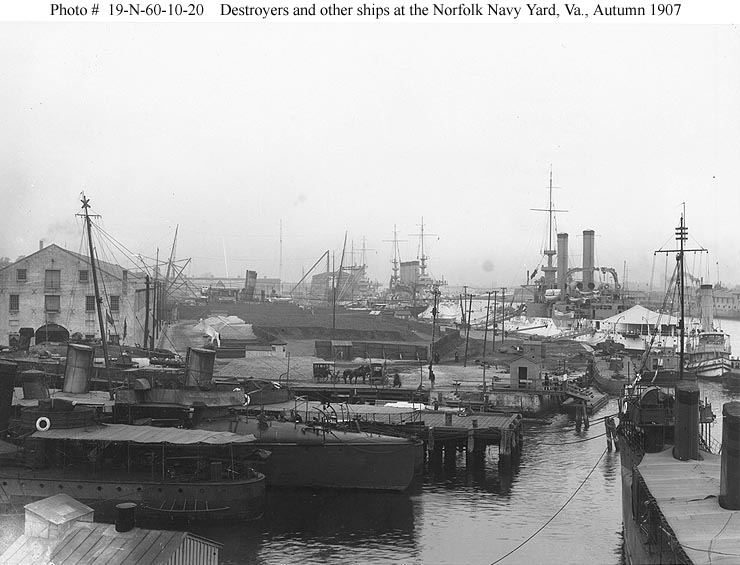 | ||
|---|---|---|
| | ||
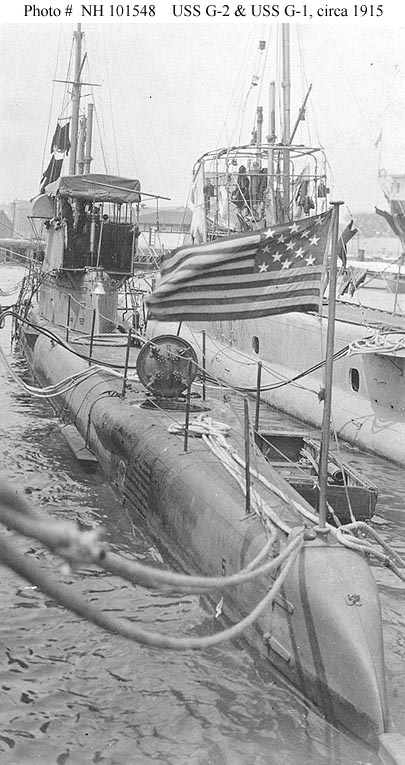 | ||
| USS G2 and USS G-1 tied up to USS Fulton (AS 1) | ||
| Soon the growth in the number of submarines plus the growing operational distances necessitated the addition of several more tenders - USS Castine (1908) and USS Dixie (1909) deployed to the Newport / Annapolis / Norfolk ports usually towing USS Severn (1910) to New England waters in summer - and Chesapeake Bay in Winter where she (Severn) cared for the Third Division.- Monitors Tonopah and Tallahassee deployed as roving tenders "to the Atlantic Fleet:" during 1909 and 1910 respectively. Castine and the collier Mars towed the "C" boats to Guantanamo in early 1913 from Norfolk - the first of a journey that would - by the end of that year -- see Tallahassee and Severn deployed with the "C" boats to Panama. Just before World War One - USS Fulton (AS 1) was added to the Atlantic tender fleet - as was Ozark. By this time - Chesapeake Bay / Hampton Roads was becoming firmly extablished as the central point of U. S. coastal submarine activity - and a permanent base was considered. But money was tight - Congress was hesitant to spend on military infra-structure - as so far - the conflicts the United States had faced were "handled" with the assets already in place. | ||
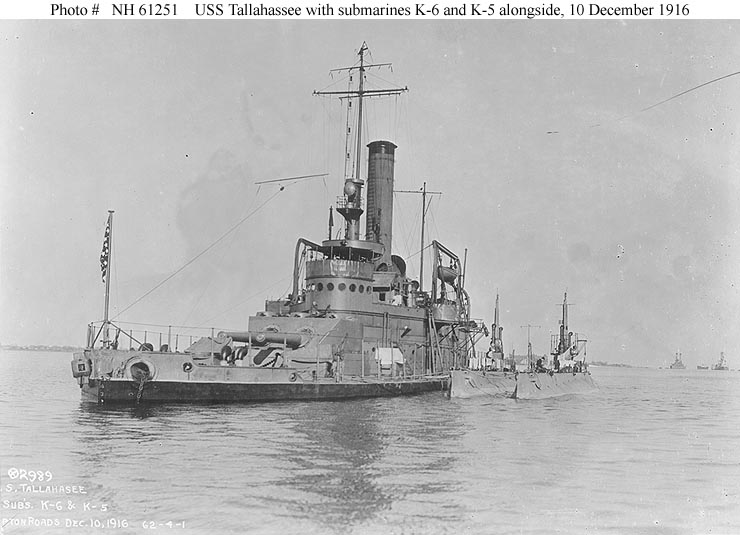 | ||
| Tallahassee anchored in Hampton Roads - just off Naval Station Norfolk | ||
| | ||
Once World War One was a reality that the United States couldn't avoid - and it bacame obvious that this time the United States was facing an enemy that wan't going to be easy to defeat - Congress approved buying and building facilities to suspport the war effort. One purchase and investment was Sewell's point - that became Naval Station Norfolk - which has grown over time to one of the most important Naval facilities in the United States. But it's both interesting and important to note that submarines operating in the region relied on tenders for nearly a decade before that facility was available - it was tenders that made it posible. As World War One progressed - a Submarine Base was established at Norfolk Naval Base - which eliminated (for a time) the need for a tender to be permanently deployed at Norfolk. After World War One - the Norfolk Submarine Base continued to operate without a permanently deployed Tender. USS Bushnell (AS 2) USS Savanah (AS 8) and USS Falcon were deployed as Atlantic Fleet tenders - ranging up and down the East Coast of the United States allowing submarines to operated out of further and further points where facilities weren't available. New London enjoyed a permanently deployed tender for most of the years between the wars - suppling advanced support services there. | ||
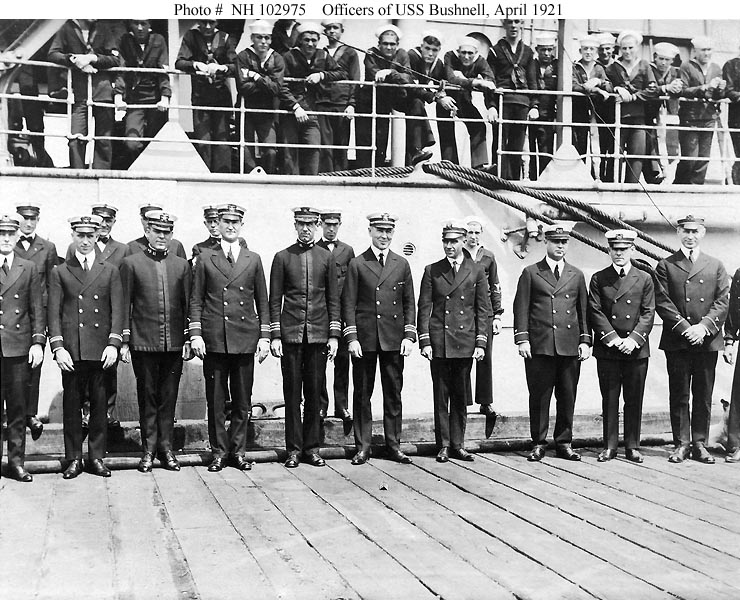 | ||
| USS Bushnell (AS 2) at the pier in Norfolk. These are Tender Sailors - between "the Wars"... | | |
| As world affairs became more and more threatening - the United States responded by placing most of it's submarines in the Pacific to counter what it saw as Japan's increasing agression. By the time the United States was attacked and brought into World War Two only USS Beaver (AS 5), USS Antaeus (AS 21) and USS Griffin (AS 13) remained in the Atlantic. By September 1943 - Beaver and Griffin were both operating in the Pacific - with Antaeus reassigned to troop transport duties - and her designation changed to AG. by July, 1943 Beaver trasisted the Panama Canal - putting all tenders in the Pacific Theater. After World War II "peace" was gradually replaced by the "Cold War" - the most serious threat to the United States was now preceived to come from across the Atlantic - so the Submarine Force Atlantic began a steady build up. Beginning in 1946 a permanent deployment of tenders to Norfolk was made - which lasted until 1980. | ||
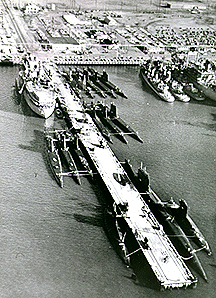 | ||
| | ||
| USS Orion (AS 18) served at Norfolk from May 1946 until she was relieved in 1970 by the L. Y. Spear - which served at Norfolk until the end of 1980. The years 1981 - mid 1992 Norfolk was again without a tender until USS Hunley arrived in August 1992. From then until 1994 Norfolk once again had a tender deployed on a permanent basis. | ||
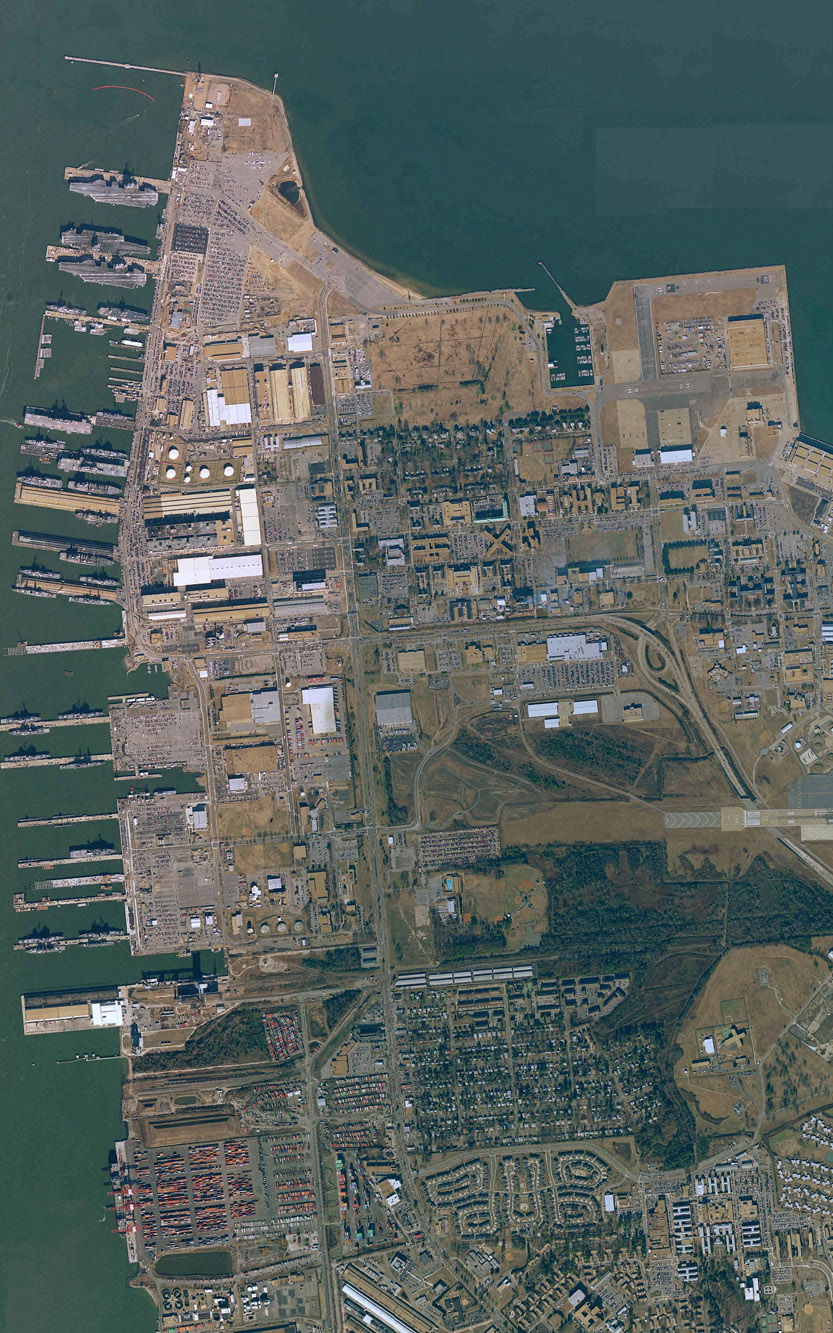 | Naval Station Norfolk today. Four Submarines can be seen moored to the D&S piers... no tender though... | |
| | ||
| Go Back to Deployments - The Early Years The Panama Canal | Continue on to Deployments - World War I |
| Return to TenderTale Main Page © 2006 Common Cents Computers | |